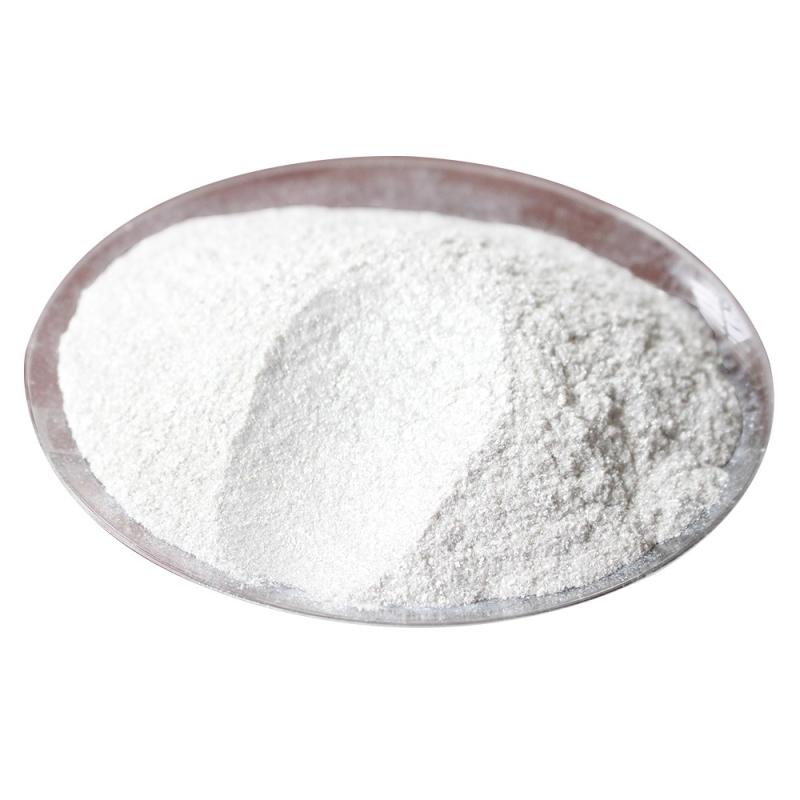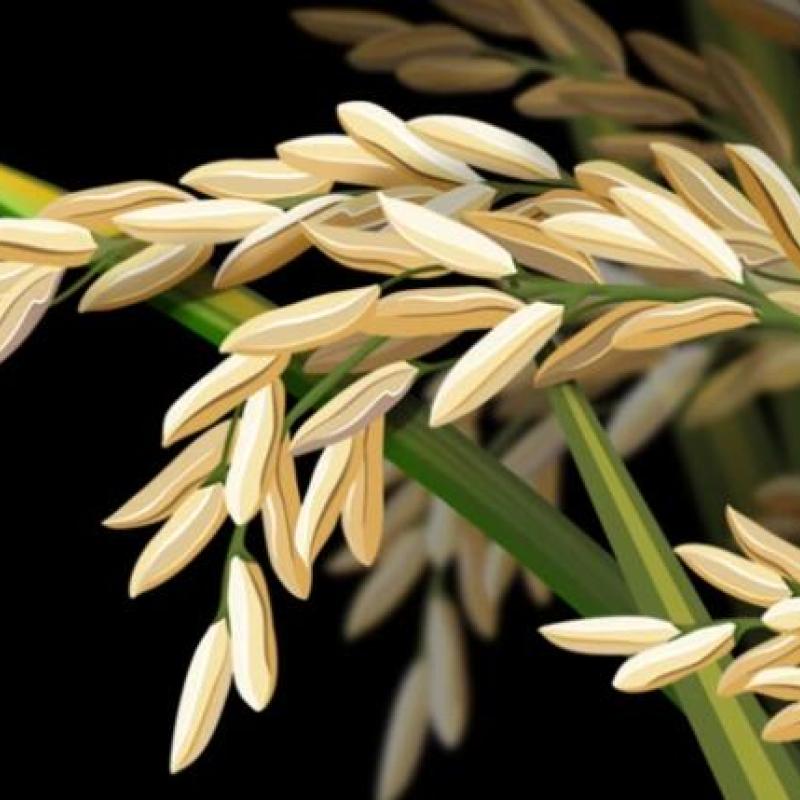Common name: EMAMECTIN-BENZOATEChemical name:(4''R)-4''-DEOXY-4''-(METHYLAMINO)AVERMECTIN B1 BENZOATE Molecular formula: C49H77NO13Structural formula:Molecular weight: 888.13CAS No. : 155569-91-8Product description:Emamectinbenzoate, emamectinbenzoate for short, It is the result of the derivatization study on the hydroxyl group of 4 "-(α -1-zetan fructose-group)-α -1-zetan fructose by Merck in 1984.
Contacter maintenant
Product description:emamectinbenzoate, emamectinbenzoate for brief, it is the result of the derivatization observe on the hydroxyl institution of four "-(α -1-zetan fructose-organization)-α -1-zetan fructose with the aid of merck in 1984.
Contacter maintenant
Structural formula:Molecular weight: 449.85CAS No. : 91465-08-6Physical and chemical properties:Pure product is white solid, industrial product is light yellow solid. Steam pressure 200×10-9Pa(2.67×10-7Pa)(20℃)Specifications:95%TC, 25%EC, 25%WP, 2.5%EWPacking:25Kg fiber drum or 25 Kg kraft bag.Usage:Pyrethroid is a tactile, gastrotoxic pyrethroid insecticide. Used to control pests on cotton, vegetables, tobacco and other crops.
Contacter maintenant
Common name: ButachlorChemical name:N-(butoxymethyl)-2-chloro-2',6'-diethylacetanilideMolecular formula: C17H26ClNO2Structural formula:Molecular weight: 311.85CAS No. : 23184-66-9Product description:Butachlor is a kind of amide systemic and conductive selective preemergence herbicide, also known as norlachlor, machete, and mediachlor. The pure product is a light yellow oily liquid with a slight aromatic smell. It is hardly soluble in water and easily soluble in many organic solvents. It is chemically stable under normal temperature and neutral and weak alkaline conditions.
Contacter maintenant
Fibulonil can result in cl- float by way of blocking off the cl- channel of the nerve membrane managed by way of γ -aminobutyric acid receptor, which causes excessive excitement of the apprehensive gadget and results in the dying of the insect frame, as a result attaining the prevention and manipulate impact of various monetary pests.Common name: FIPRONILChemical name: 5-amino-1-[2,6-dichloro-4-(trifluoromethyl)phenyl]-4-[(trifluoromethyl)sulfinyl]-1H-pyrazole-3-carbonitrileMolecular formula: C12H4Cl2F6N4OSStructural formula: Molecular weight: 437.15CAS No.
Contacter maintenant
Chlorfenapyr is converted into active substances (insecticidal interest) by multifunctional oxidases in bugs. note: multifunctional oxidase mainly performs an critical role inside the interpretation of pyrethroids, organophosphorus and macrolides.Common name: CHLORFENAPYRChemical name: 4-bromo-2-(4-chlorophenyl)-1-ethoxymethyl-5-trifluoromethylpyrrole-3-carbonitrile Molecular formula: C15H11BrClF3N2OStructural formula:Molecular weight: 407.61CAS No. : 122453-73-0Physical and chemical properties:Pure white solid. M.p.
Contacter maintenant
Common name: MetalaxylChemical name: methyl2-[(2,6-dimethylphenyl)(methoxyacetyl)amino]propanoateMolecular formula: C15H21NO4Structural formula:Molecular weight: 279.33CAS No. : 57837-19-1Product description:Metalaxyl is an acylalanine fungicide with systemic function.[3] Its chemical name is methyl N-(methoxyacetyl)-N-(2,6-xylyl)-DL-alaninate. It can be used to control Pythium in a number of vegetable crops, and Phytophthora in peas.
Contacter maintenant
Product description:Propolachlor, also referred to as saufort, is mainly used for directly sown rice fields. it has the traits of secure rice boom, extensive weed control spectrum and proper weed manage impact. it could essentially manipulate the damage of weeds in the whole boom length.
Contacter maintenant
Structural formula:Deltamethrin is a pyrethroid composed of a single stereoisomer, of a possible 8 stereoisomers, selectively prepared by using the esterification of (1r,3r)- or cis-2,2-dimethyl-3-(2,2-dibromovinyl)cyclopropanecarboxylic acid with (alpha,s)- or (+)-alpha-cyano-three-phenoxybenzyl alcohol or by way of selective recrystallization of the racemic esters acquired by esterification of the (1r,3r)- or cis-acid with the racemic or (alpha-r, alpha-s, or alpha-r/s)- or + or − alcohol.Molecular weight: 505.2CAS No.
Contacter maintenant
Usage:Deltamethrin is a incredibly powerful insecticide. it's far used, among other programs, for the production of lengthy-lasting insecticidal nets , which, together with indoor residual spraying , are the principle vector control strategies recommended by way of the world health enterprise (WHO) for the control of malaria. Deltamethrin plays a key role in controlling malaria vectors, and is used in the manufacture of long-lasting insecticidal mosquito nets.
Contacter maintenant
Physical and chemical properties:The pure product is white crystal and has no scent. m.p.250~251℃, b.p.350℃, vapor stress 1.33pa (40℃). solubility at 25℃: benzene 42g/kg, toluene 70g/kg, xylene 80g/kg, dimethylformamide 40gchemicalbook/kg, cyclohexanol 30g/kg, dimethyl sulfoxide 20g/kg, acetone 2g/kg , kerosene 1g/kg, water zero.6mg/kg. industrial product purity>ninety eight%, barely irritating smell.
Contacter maintenant
Product description:Z-cis-cyfluthrin is an intermediate for the preparation of lambda-cyhalothrin (cyfluthrin), tefluthrin, bifenthrin and other pyrethroids.Utilization:The lambda cyhalothrin acid fluorine-containing intermediate is one of the varieties of chrysanthemum acid, that is an essential intermediate for the synthesis of pyrethroid insecticides.
Contacter maintenant
It is moderately toxic to humans and animals, has no irritating effect on rabbit skin, has mild irritating effect on eyes, and is highly toxic to aquatic organisms, bees and silkworms. High insecticidal activity, is a nerve agent, pyrethroid insecticides. It is mainly used for contact killing and stomach poisoning, and has a certain repelling effect, without systemic suction and fumigation. Binding effect, long lasting effect, able to withstand rainwater leaching.
Contacter maintenant
Usage:Pyrethroid is a tactile, gastrotoxic pyrethroid insecticide. used to control pests on cotton, veggies, tobacco and other crops.Chemical name: (1R,3R)-3-((Z)-2-Chloro-3,3,3-trifluoro-propenyl)-2,2-dimethyl-cyclopropanecarboxylic acid (S)-cyano-(3-phenoxy-phenyl)-methyl esterMolecular formula: C23H19ClF3NO3Structural formula:Molecular weight: 449.85CAS No. : 91465-08-6Physical and chemical properties:Pure product is white solid, industrial product is light yellow solid.
Contacter maintenant
Chemical name of Indoxacarb products:methyl 7-chloro-2-[methoxycarbonyl-[4-(trifluoromethoxy)phenyl]carbamoyl]-3,5-dihydroindeno[1,2-e][1,3,4]oxadiazine-4a-carboxylate;Physical and chemical properties of Indoxacarb products:Molecular weight : 527.834Density: 1.53Melting point: 139-141 DHS CBoiling point: 571.4ºC at 760 mmHgFlash: DHS 299.3 CMolecular formula :C22H17ClF3N3O7Toxicity of Indoxacarb products(DAPX-MP062) acute transoral: LD50: male 1730mg/kg, female 268mg/kg: rabbit acute transcutaneous LD50: & GT; 5000 mg/kg.
Contacter maintenant
Physical and chemical properties:The pure product is colorless crystal and has no smell. m.p.155~156℃, relative density 1.29. easily soluble in benzene, chloroform (230g/l), acetone (80g/l, carbon disulfide and other chemicalbook organic solvents, barely soluble in ether and ethanol (<10g/l), insoluble in water (30mg/l). decomposes in acid.
Contacter maintenant
AzaconazoleChemical name:1-[[2-(2,4-dichlorophenyl)-1,3-dioxolan-2-yl]methyl]-1,2,4-triazole Molecular formula: C12H11Cl2N3O2Structural formula:Molecular weight: 300.1406CAS No. : 60207-31-0Physical and chemical properties:Density: 1.51 g/cm3Melting point: DHS 112.6 CBoiling point: 460.7ºC at 760 mmHgFlash: DHS 232.4 CRefractive index: 1.658Storage conditions: 0-6ºC
Contacter maintenant
Common name: AcetochlorChemical name: 2-chloro-N-(ethoxymethyl)-N-(2-ethyl-6-methylphenyl)acetamideMolecular formula: C14H20ClNO2Structural formula:Molecular weight: 269.77CAS No. : 34256-82-1Physical and chemical properties:Light brown liquid. b.p.>200℃, m.p.>0℃, vapor pressure 133.3Pa, relative density 1.11 (30℃).
Contacter maintenant
Common name: GlufosinateChemical name: 2-Amino-4-[hydroxy(methylphosphonoyl)]butanoic acidMolecular formula: C5H18N3O4PStructural formula:Molecular weight: 215.19CAS No. : 77182-82-2Product description:Glufosinate-ammonium, also known as glufosinate, is a non-selective foliar spray of organophosphorus herbicide. It was first synthesized and developed by the Federal German Hoechst Chemical Company in 1979.
Contacter maintenant
MF: C4H8MnN2S4ZnMW: 332.71CAS: 8018-01-7Melting point of 192-194 ° CDensity of 1.92 g/cm3Vapor pressure, Negligible AT, 20 °CFlash point is 138 ° CStorage condition APPROX 4°CWater solubility 6-20 mgl-1 (20 °C)Product description:Pure mancozeb is white powder, industrial products are gray white or light yellow powder, with rotten egg taste.
Contacter maintenant
Alachlor is an herbicide from the chloroacetanilide family. It is an odorless, white solid. The greatest use of alachlor is for control of annual grasses and broadleaf weeds in crops. Use of alachlor is illegal in the European Union and no products containing alachlor are currently registered in the United States.Its mode of action is elongase inhibition, and inhibition of geranylgeranyl pyrophosphate (GGPP) cyclisation enzymes, part of the gibberellin pathway. Common name: AlachlorChemical name: 2-chloro-N-(2,6-diethylphenyl)-N-(methoxymethyl)acetamide; Molecula
Contacter maintenant
Common name: CLOPYRALIDChemical name: 3,6-dichloropyridine-2-carboxylic acidMolecular formula: C6H3Cl2NO2Structural formula: Molecular weight: 192CAS No. : 1702-17-6Product description:Clopyralid is a systemic phytohormone-type herbicide, which is a product of Dow Company in the United States. It has good herbicidal effects and strong selectivity. Entered the U.S. market in 1987 to control annual or perennial broad-leaved weeds in corn and sugar beet fields.
Contacter maintenant
MF: C4H8MnN2S4ZnMW: 332.71CAS: 8018-01-7Melting point of 192-194 ° CDensity of 1.92 g/cm3Vapor pressure, Negligible AT, 20 °CFlash point is 138 ° CStorage condition APPROX 4°CWater solubility 6-20 mgl-1 (20 °C)Product description:Pure mancozeb is white powder, industrial products are gray white or light yellow powder, with rotten egg taste.
Contacter maintenant
Product description:The pure made from mancozeb is white powder, and the commercial product is off-white or light yellow powder with the smell of rotten eggs. it's miles hardly ever soluble in water, insoluble in maximum natural solvents, soluble in pyridine, and volatile to mild, warmth, and humidity.
Contacter maintenant

































